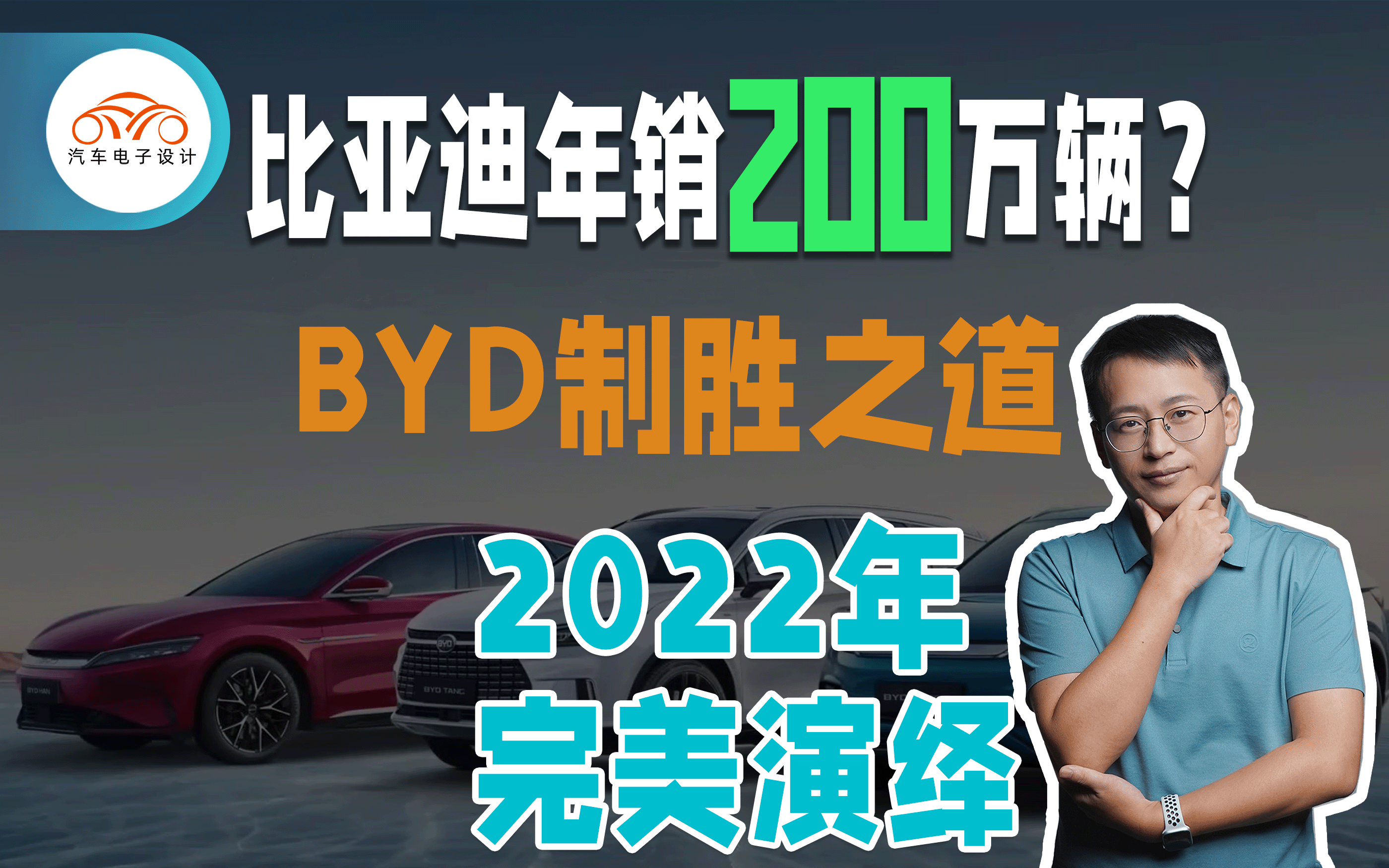Author: Zhu Yulong
In 2022, which automaker will become the most prominent and have the largest market share? It is undoubtedly BYD. As the last quarter of 2022 approaches, how many more cars can BYD sell? Why are BYD’s cars selling so well? Today, let’s discuss these two things.
BYD’s 2022 Sales Forecast
BYD has released data showing that it sold 201,259 new energy vehicles in September, an increase of 183% year-on-year and 15% higher than the previous month; the cumulative sales of new energy vehicles for January-September was 1,180,054 units, a year-on-year increase of 250%. With three more months to go, if the rate of surpassing 200,000 cars per month continues, BYD’s sales this year could exceed 1.8 million.
1) Sales Forecast Based on Data Fitting
From the perspective of data fitting, we can predict this data and estimate it based on the current rate:

-
According to exponential fitting, the amount of the next three months would be around 220 thousand, 250 thousand, and 280 thousand respectively. In the fourth quarter, there may be an increase of 850 thousand, and the sales volume will reach 1.97 million in 2022.
-
If we fit it according to polynomial fitting, the volume of the next three months will be 210 thousand, 230 thousand, and 260 thousand, respectively, and there will be an increase of 700 thousand in the fourth quarter. The sales volume will reach 1.88 million in 2022.
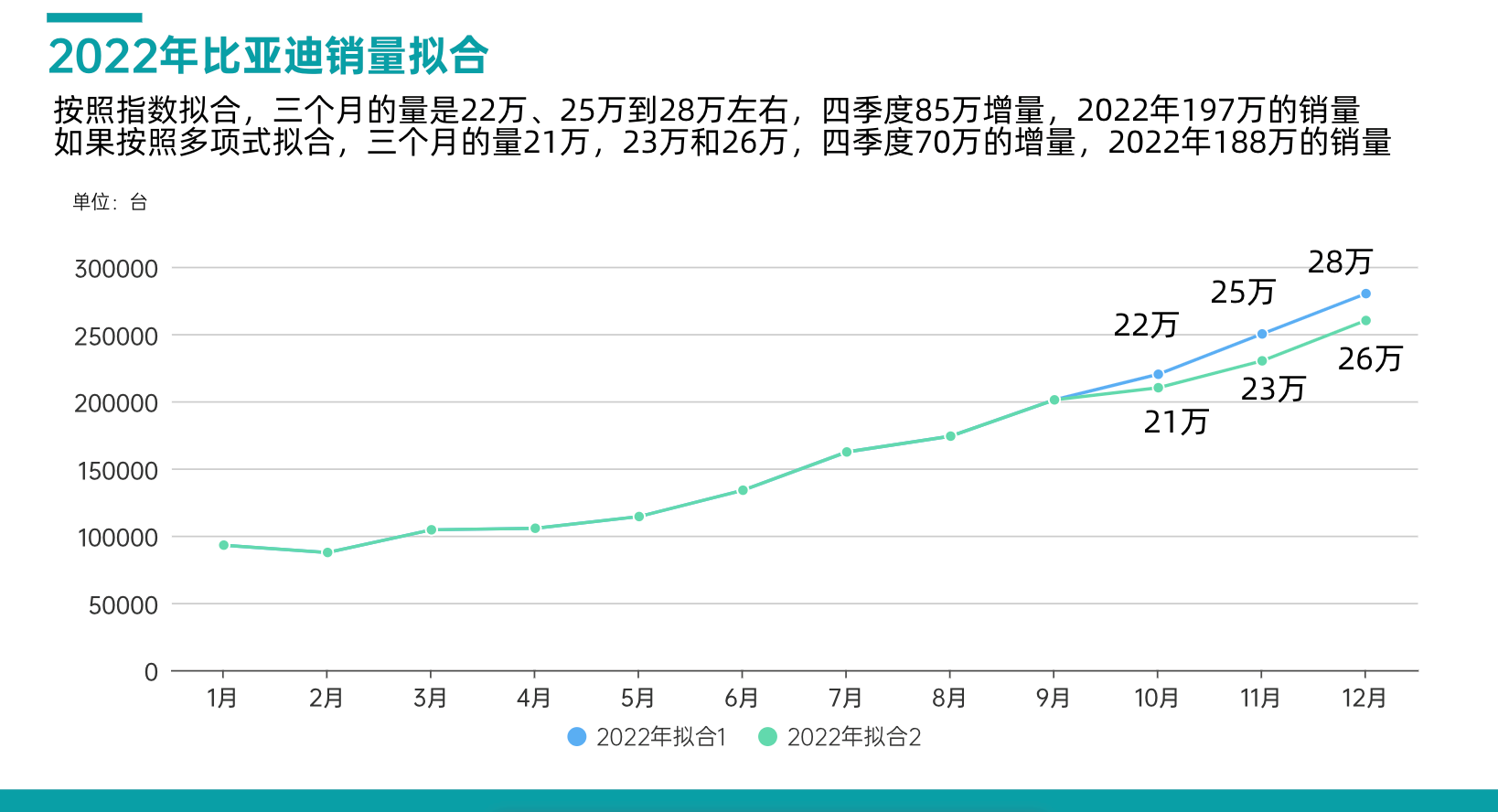
2) Delivery Driving Force: Order Pool and Production Capacity
Of course, the above are all numerical games. The main driving force of delivery comes from many aspects, such as order pool and production capacity.
- Order pool: At the recent BYD conference call, Chairman Wang Chuanfu revealed that BYD currently has 700,000 outstanding orders, and the delivery cycle for new car orders is 4-5 months. BYD will strive for a monthly delivery volume of 280,000 by the end of 2022.
In addition to the accumulated orders, BYD is currently adding more than 200,000 new orders each month. However, there is a problem here: the current order performance is based on subsidies, Pure electric models have subsidies of 9,100-12,600 yuan, while plug-in hybrid models have subsidies of 4,800 yuan. But in 2023, the subsidies will likely decline. How can BYD get consumers to continue waiting during the subsidy transition period?
The most likely solution is that BYD will guarantee the price according to the orders. Therefore, from the consumer’s point of view, it is still cost-effective to buy BYD at this time. Of course, the increase in BYD’s orders is also under this background.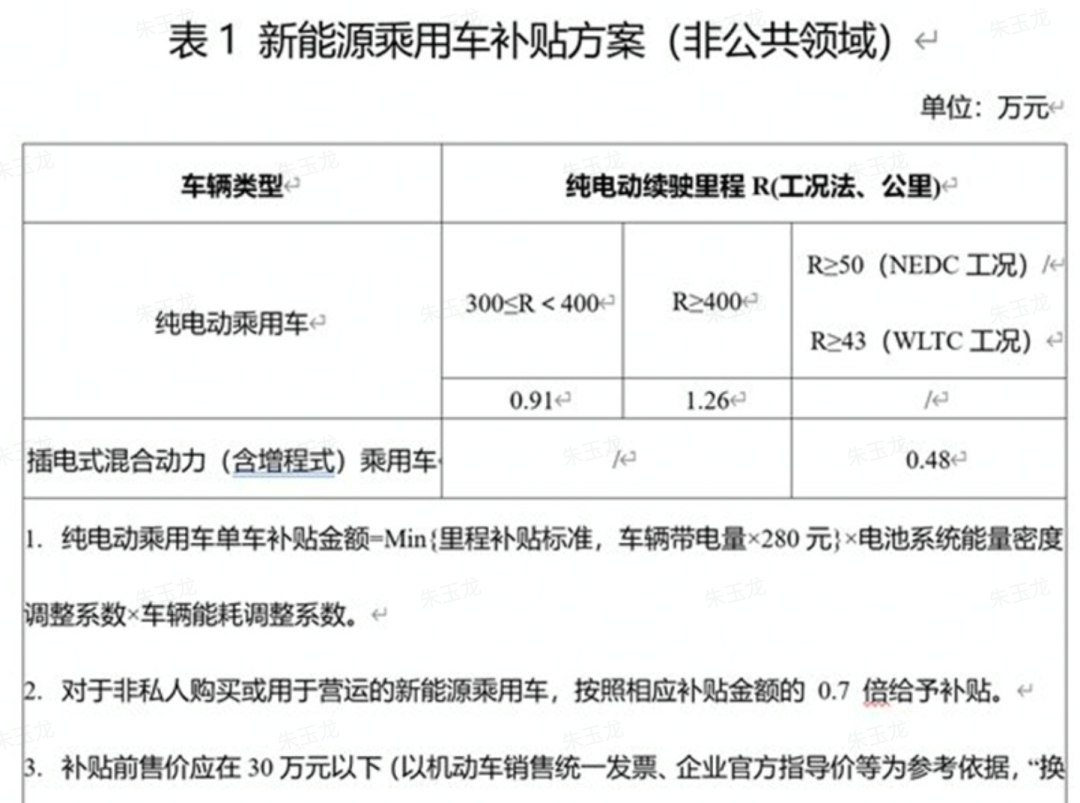
- Capacity: The production capacity, including overall vehicle production capacity, battery production capacity and supply capacity of core components, including chips, also affects delivery (sales) volume.
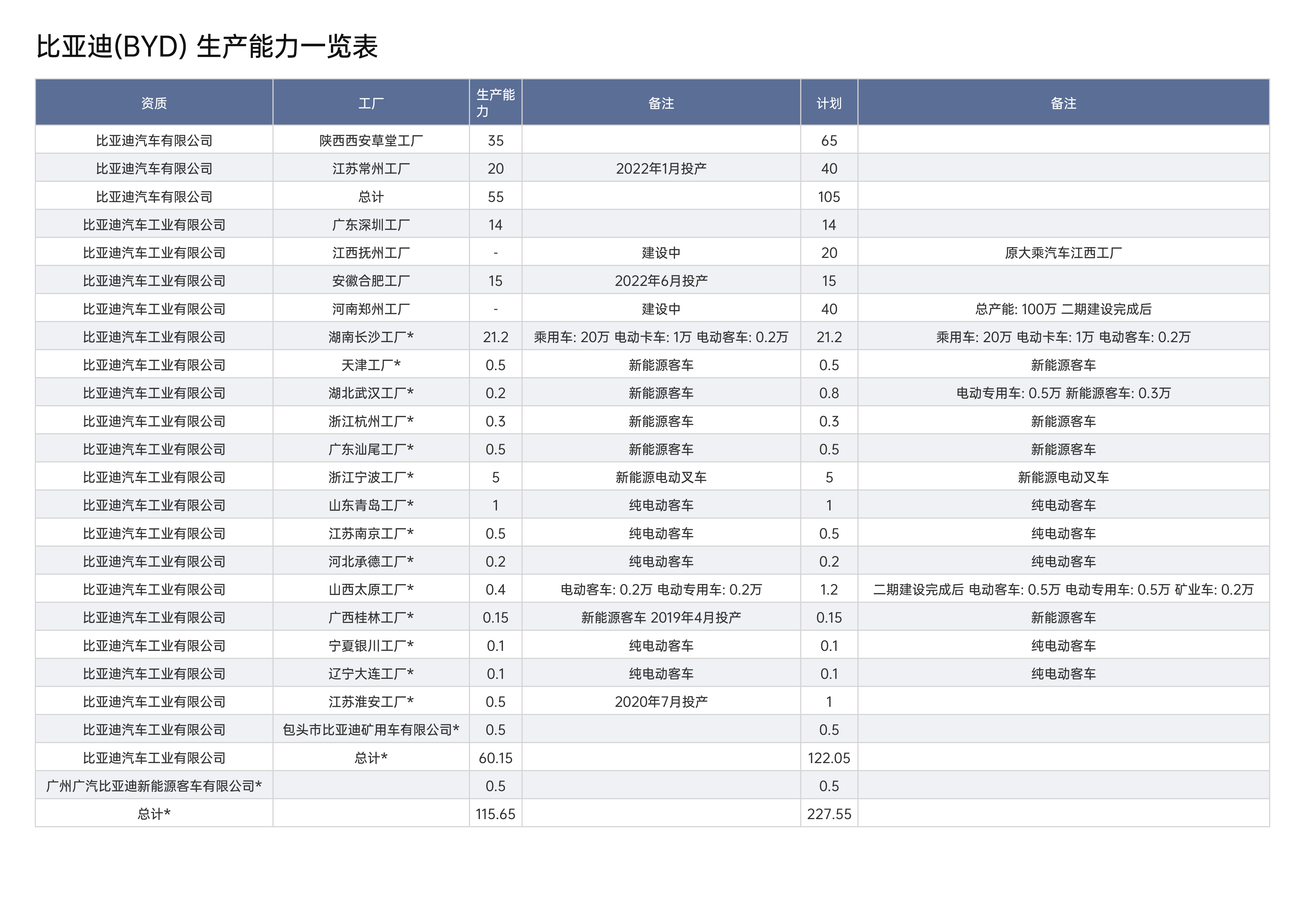
Disruptions caused by events such as the supply chain of the Yangtze River Delta in April and May, power outages in Sichuan and the Shenzhen epidemic can affect supply. Therefore, maintaining a supply volume of more than 200,000 is also an important factor affecting capacity.
BYD’s new energy vehicle production reached 204,900 in September, making it difficult to continuously increase it to 280,000. The estimated effective capacity increase can reach 250,000-260,000.
Regarding how many BYDs can be purchased this year, I also conducted a poll, and as of the day of video recording, most of the voters believe it is around 2 million, which means an additional 720,000 deliveries per month in the next 3 months.
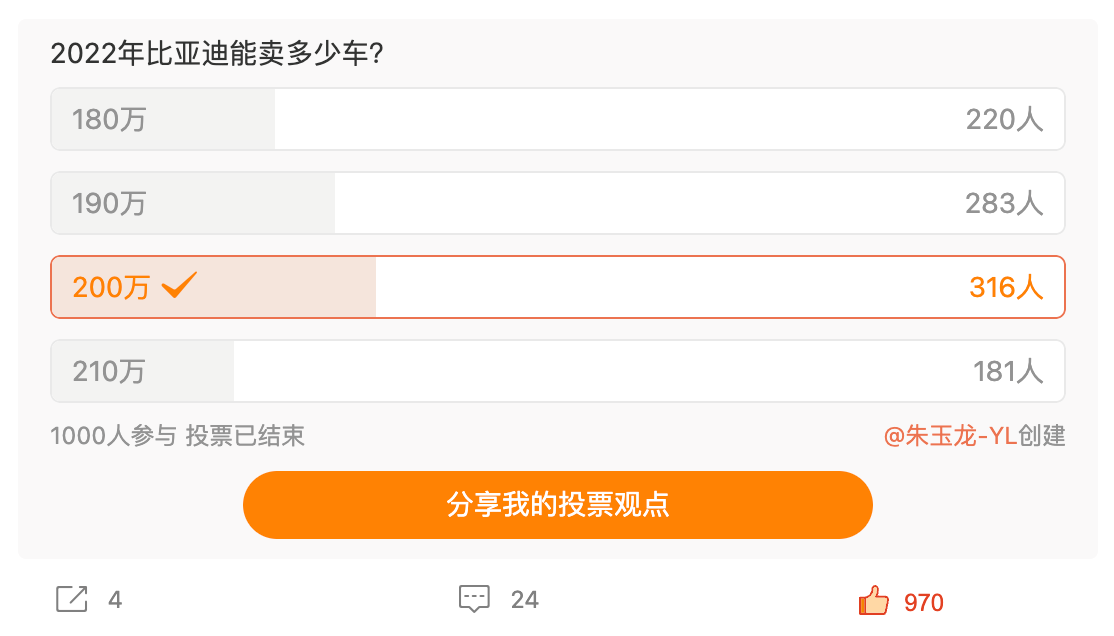
Why is BYD selling so well?
The second issue we want to discuss is why BYD can sell so well?
Before analyzing BYD, let’s take a look at the overall market situation of new energy vehicles:
In August 2022, China’s new energy vehicle production and sales reached 691,000 and 666,000 respectively, setting a new monthly high for production and sales, with a year-on-year increase of 1.2 times and 1 time, respectively. From January to August, the production and sales of new energy vehicles reached 3.97 million and 3.86 million, respectively, a year-on-year increase of 1.2 times and 1.1 times, respectively.

This year’s consumer market situation is as follows: oil prices and new energy vehicles are both rising, but the growth rate of the entire economy has slowed down. The direct result is that the total price of the car we purchase is decreasing.
In the first half of last year, the best-selling pure electric vehicles in the Chinese market were those priced between RMB 250,000 and RMB 350,000 (as well as models below RMB 50,000, which I mentioned in a previous video, belong to the category of exploiting car companies), mainly from new impetus brands, with a focus on intelligence.But in July of this year, the market’s largest share became models priced between 100,000-150,000 RMB and 150,000-200,000 RMB. As a traditional automaker, BYD’s response in the new energy market is to position its models in this price range. Additionally, the intelligentization of new entrants has led to price increases, resulting in slower growth rates relative to BYD.
Therefore, the first reason why BYD sells well: New energy vehicles have caught up with the good timing of China’s domestic market development, and the pricing of its pure electric vehicle models is in line with the market’s largest share.
Why can BYD still control prices when new energy vehicles are experiencing price increases? In addition to not blindly benchmarking new entrants in intelligentization, it mainly relies on vertically integrated battery supply—-that is, controlling its own battery production, ultimately achieving the goal of cost control and price management.
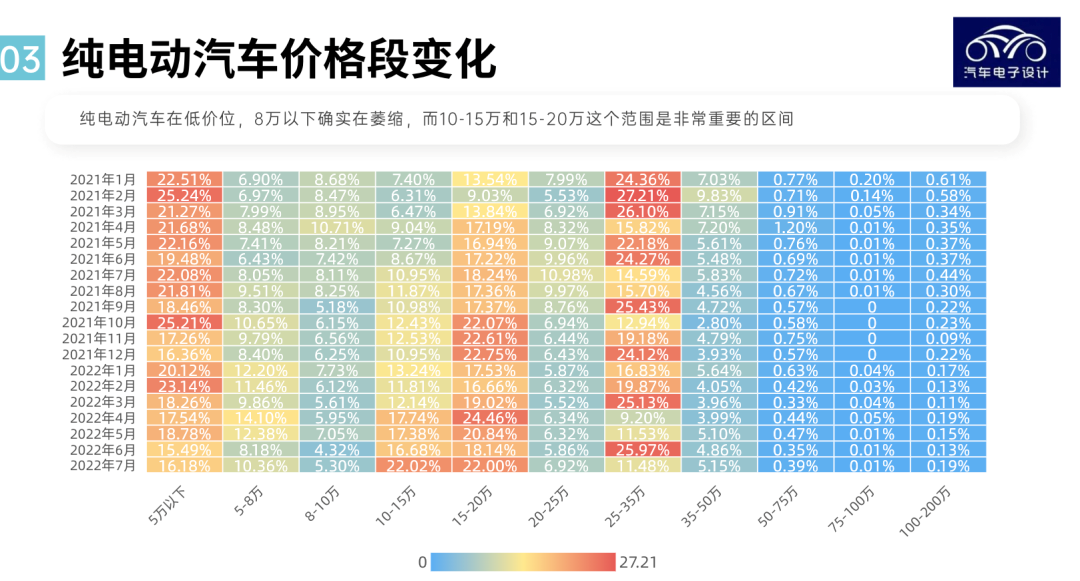
By the way, we can also mention Aiways here. They, like BYD, have maintained high-speed growth in the field of pure electric vehicles this year. The fundamental reason is that their vehicle models’ pricing is just in line with the market’s largest demand interval, and the key to price control is still batteries. BYD produces batteries itself, not only earning money from selling the vehicle but also earning money from both the battery and the vehicle. This is the core ability to resist rising raw material prices in the pure electric field this year.
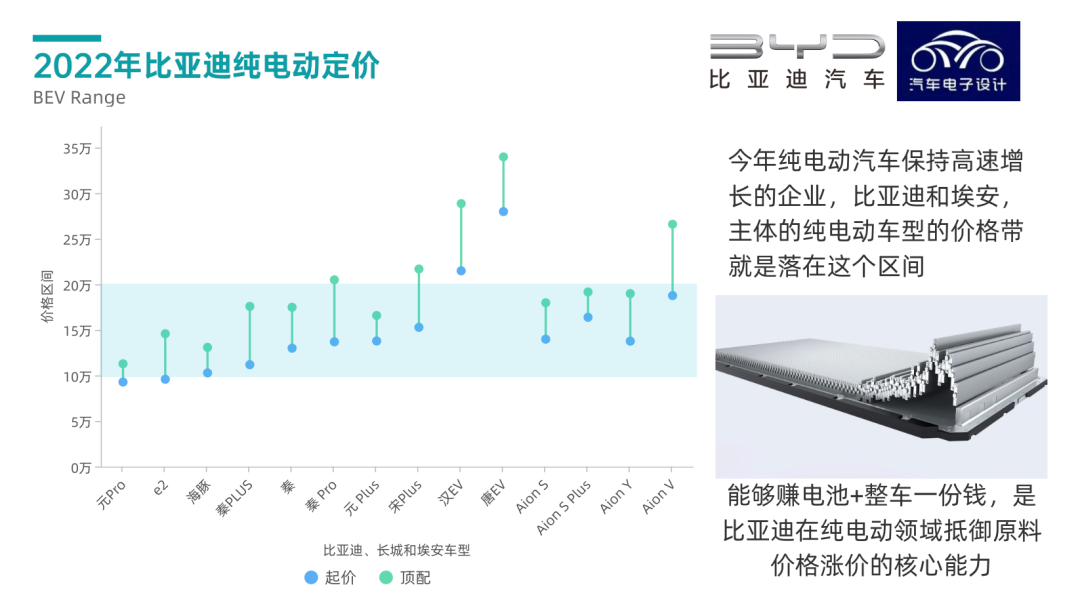
If we say that BYD has gained new entrant market share in the pure electric market by relying on high cost-performance, then BYD’s hybrid models have also occupied the traditional fuel vehicle market through price, fuel economy, and performance competition (of course, there is also the hybrid model’s bowl of rice that previously had poor market performance).
Let’s take a look at the overall market situation first:
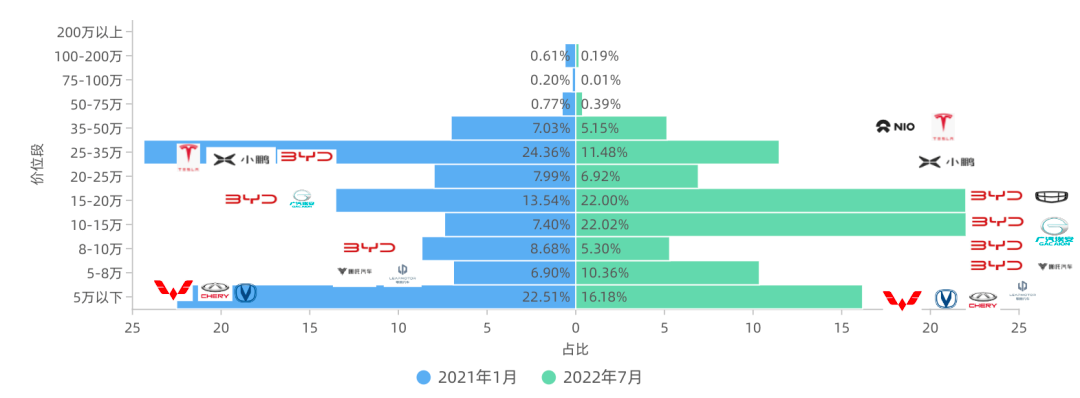
Taking the Shanghai region as an example, sales from January to August this year are as follows:
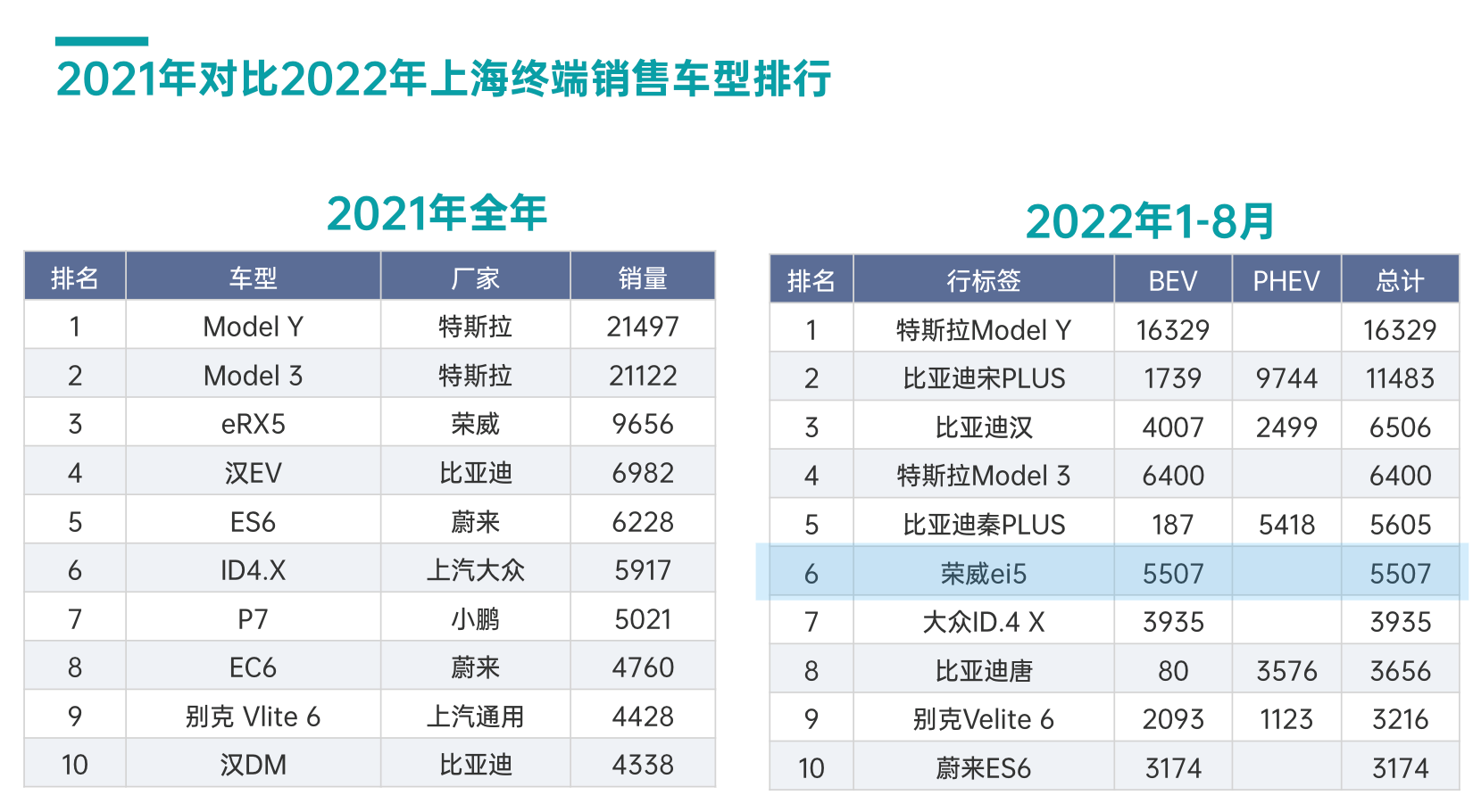
- Pure electric vehicles: Tesla and BYD ranked first and second, with Tesla holding 1/5 of the pure electric market share and BYD closely following.# Comparison of Chinese new energy passenger car market

- Plug-in hybrid field: BYD accounts for 54.8% of the market, standing alone; whether it is Roewe, which used to rank high, or Volkswagen and BMW, their overall market share has declined this year.
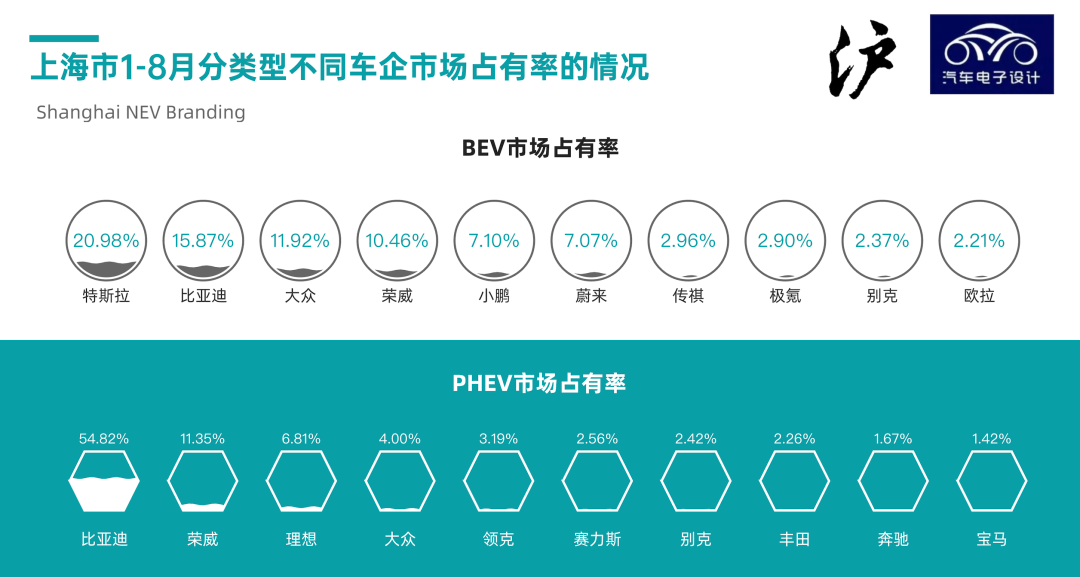
We can see that the original plug-in hybrid market is beginning to sink, and prices are gradually decreasing. Currently, only two companies, ideally automobile and WEN-Jie, have established their share at more than 250,000 yuan through extended-range differentiation. But the price for large-scale production has already dropped to three intervals: 100,000-150,000 yuan, 150,000-200,000 yuan, and 200,000-250,000 yuan.
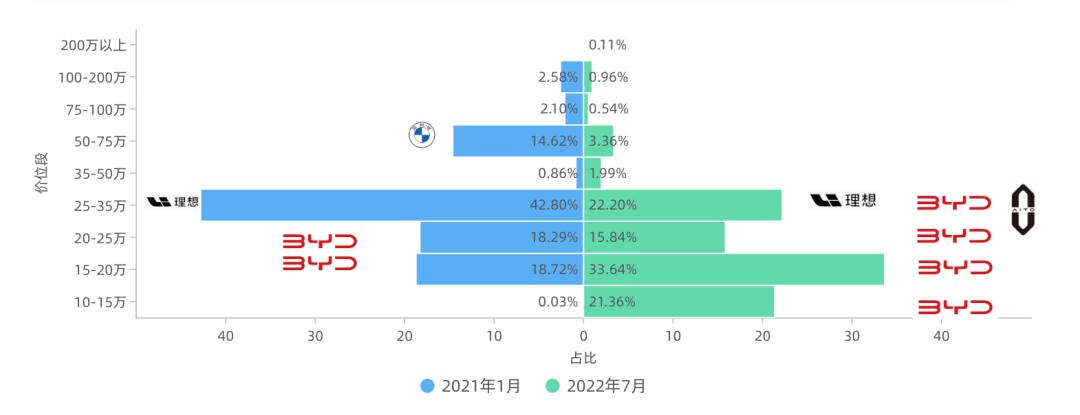
BYD has taken a step forward by leveraging the fuel-efficient reputation established by Japanese automakers, which is really important.
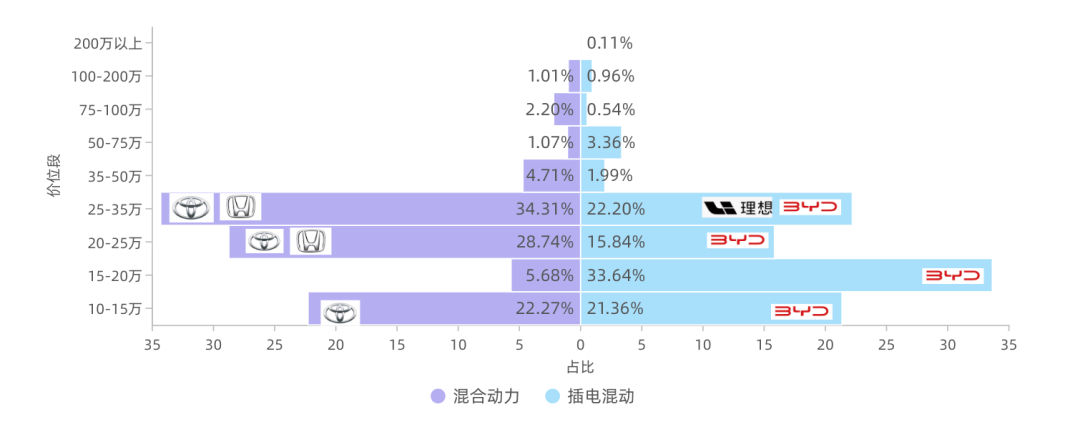
Finally, let’s summarize the reasons why BYD sells well:
- First, enter the market and expand the scale decisively
BYD is the first company to think of using plug-in hybrids to replace fuel cars at affordable prices, which has played an assisting role in the rising oil prices in 2022. If the oil price at this point returned to the price of 2020, this effect would not be so good. In fact, the popularity of DM-i is also related to oil prices to some extent.
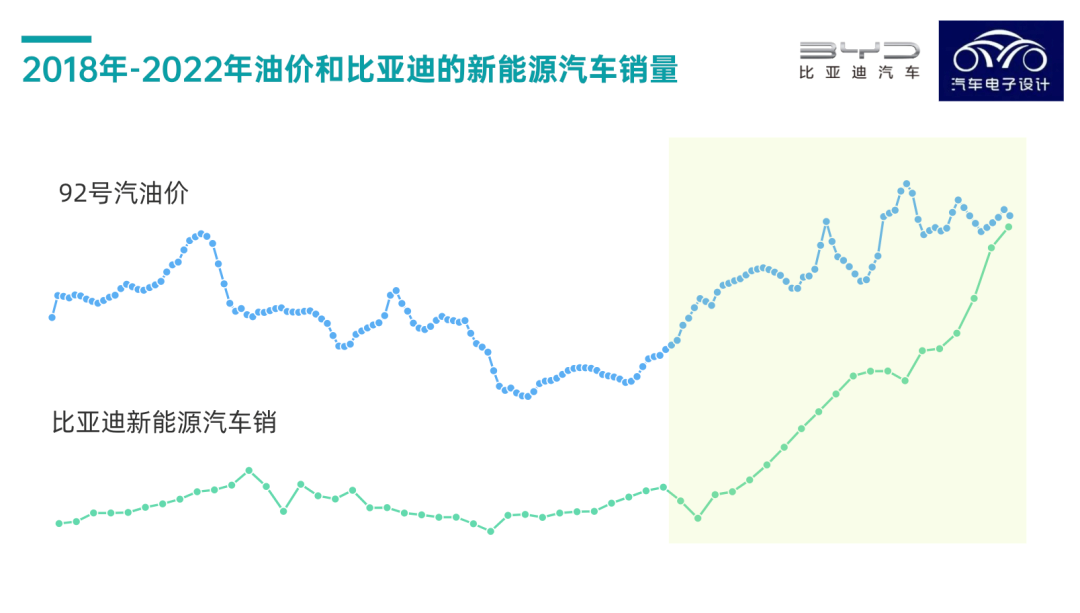
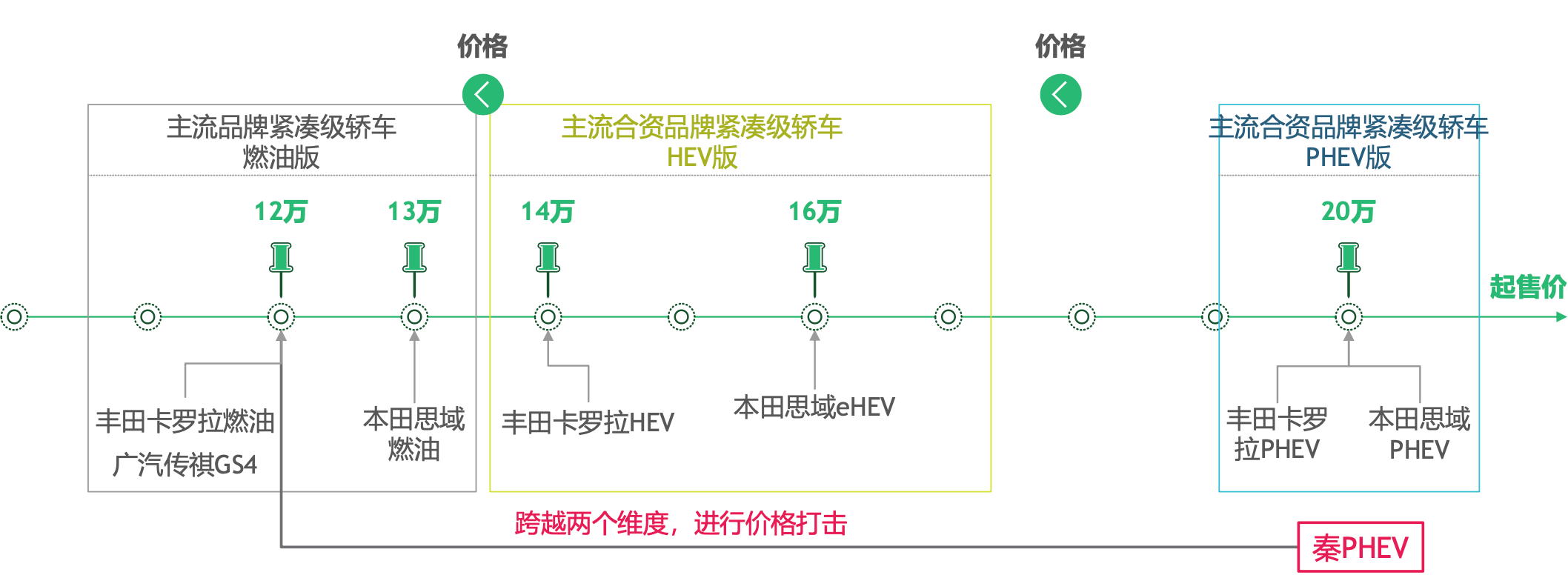
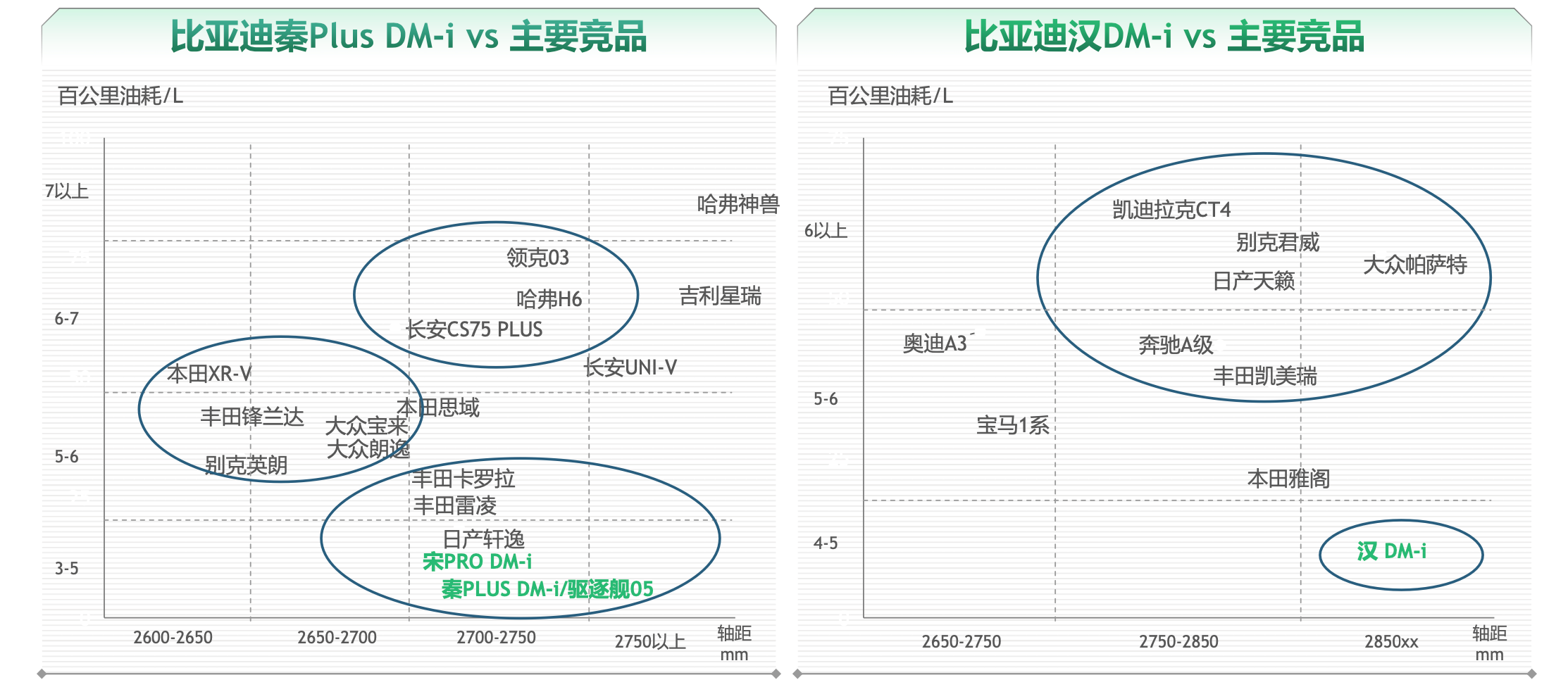 – Second, insistence on price control
– Second, insistence on price control
In the price hike wave of 2022, we can see that in the vertical supply chain from battery minerals and materials to batteries and to the entire vehicle, it is crucial for BEVs to earn a few bucks. Achieving cost control over batteries is key to achieving price parity between electric and traditional fuel vehicles (one cannot make profits without it).

- Third, finding profitable directions
In the entire automotive industry, it is crucial to identify profitable areas and how to sustain them. Therefore, in our thought process, pricing and branding growth are at the core. To survive, traditional domestic automakers inevitably need to find their position in the new energy vehicle era. Hence, the plug-in hybrid route represented by DM-i is relatively easy to learn and competition will follow.

Finally, I would like to congratulate BYD on achieving excellent results in 2022. If they can achieve an annual sales volume of 1.9 million by the end of the year, this number is truly admirable.

However, as an observer, I also want to point out something that BYD supporters may not want to hear: when the overall market is developing too quickly, it can mask many problems. When the market enters the next stage, I will continue to observe BYD and the industry’s development.
This article is a translation by ChatGPT of a Chinese report from 42HOW. If you have any questions about it, please email bd@42how.com.
